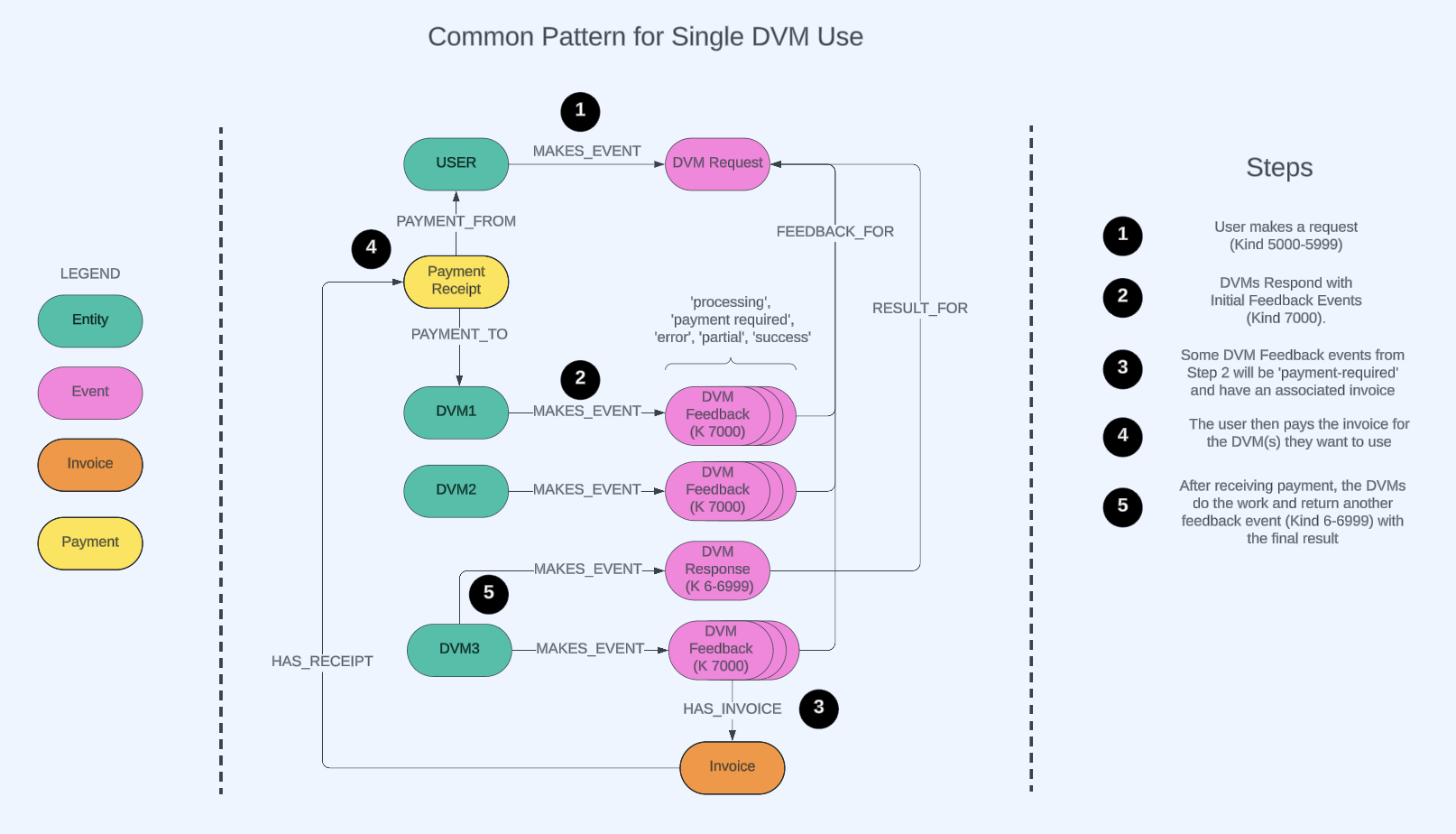DVMDash aims to be a monitoring and debugging tool for DVM activity on Nostr. Data Vending Machines (nip-90) offload computationally expensive tasks from relays and clients in a decentralized, free-market manner. They are especially useful for AI tools, algorithmic processing of user’s feeds, and many other use cases.
A version of the website is running here:
Better installation instructions are coming soon!
Besides the Django web app, the following scripts should be running with access to the same databases used by the webapp:
- After you've added a new library to the package.json file and made any changes to webpack.config.js, you can run
npm run buildto update the javascript files in the static/ directory in the monitor/static/ directory. - Then run
python dvmdash/manage.py collectstaticto update the static files in the main staticfiles/ directory, which is where static files are served when running locally.
-
Run a MongoDB locally
- for example, run mongo locally:
./mongod --dbpath ~/mongodb/data/db
- for example, run mongo locally:
-
Run Neo4j
- See https://neo4j.com/docs/operations-manual/current/installation/
- Once you have the tar file, you can run it with
./neo4j start- Or
~/bin/neo4j-community-5.20.0/bin/neo4j start
- Or
- Then check it's running in the web browser at
https://localhost:7474/
-
(Optional) Run a local DVM
-
(Optional) Run a local relay, such as bucket
- this is helpful to test local dvms with the playground page, testing sending and receiving DVM events.
- Download the APOC library JAR file that matches your Neo4j version from the APOC releases page on GitHub: https://github.com/neo4j/apoc/releases
- Copy the APOC JAR file to the plugins directory of your Neo4j installation. For example, if you're using Neo4j 4.x, the path would be neo4j-home/plugins/.
- Open the neo4j.conf configuration file located in the conf directory of your Neo4j installation.
- Uncomment or add the following line to the neo4j.conf file to enable the APOC library:
dbms.security.procedures.unrestricted=apoc.*
The graph structure of events is stored in a Neo4j database.
- Entity:
- These have an npub, and contain all users and DVMs
- Event:
- These are Nostr events signed by Entities
- Invoice:
- Data that contains information for a payment. Events refer to these
- Payment Receipt:
- Data showing a receipt of purchase, such as a zap receipt.
Note that these are the primitive relationships. There will be other, inferred relationships later based on the primitive ones.
- MAKES_EVENT: # Used any time an entity makes an event
- Entity -> Event
- FEEDBACK_FOR: # Used to connect a DVM feedback event to the original request
- Event -> Event
- RESULT_FOR: # Used to connect a DVM result event to the original request
- Event -> Event
- HAS_INVOICE: # Used to connect a feedback event to an invoice
- Event -> Invoice
- HAS_RECEIPT: # Used to connect an invoice to a payment receipt
- Invoice -> Payment Receipt
- PAYMENT_FROM: # Used to connect a payment receipt to the entity that paid
- Payment Receipt -> Entity
- PAYMENT_TO: # Used to connect a payment receipt to the entity that received the payment
- Payment Receipt -> Entity
These are the relays where we watch for DVM events.
- wss:https://nostr-pub.wellorder.net
- wss:https://relay.damus.io
- wss:https://nos.lol
- wss:https://relay.primal.net
- wss:https://offchain.pub
- wss:https://nostr.mom
- wss:https://relay.nostr.bg
- wss:https://nostr.oxtr.dev
- wss:https://relay.nostr.bg
- wss:https://nostr-relay.nokotaro.com
- wss:https://relay.nostr.wirednet.jp
